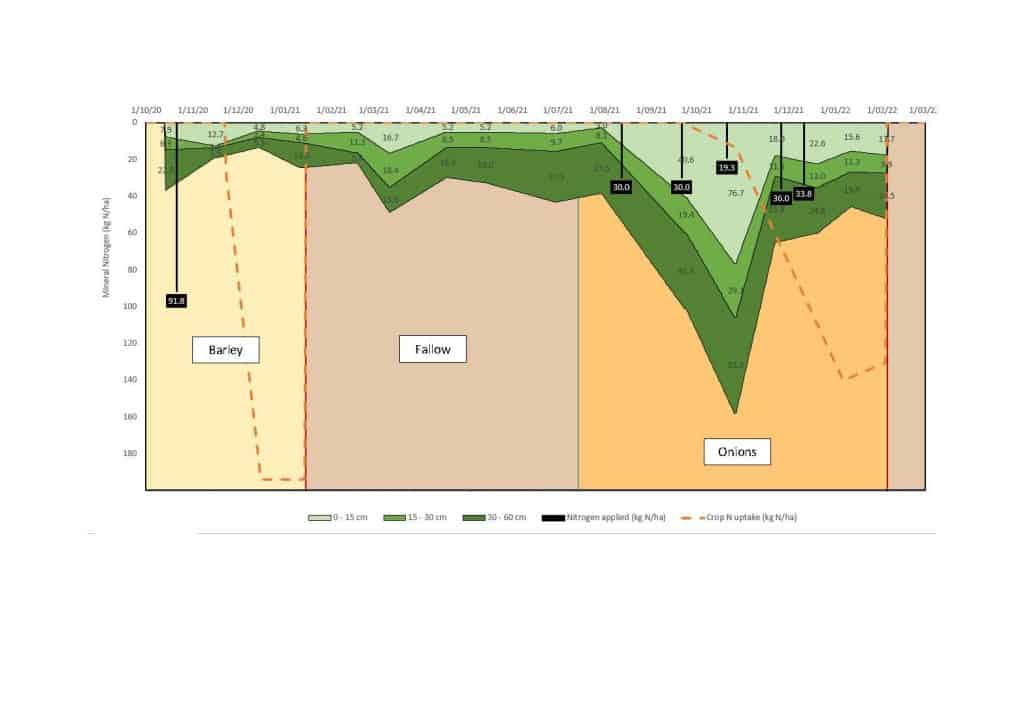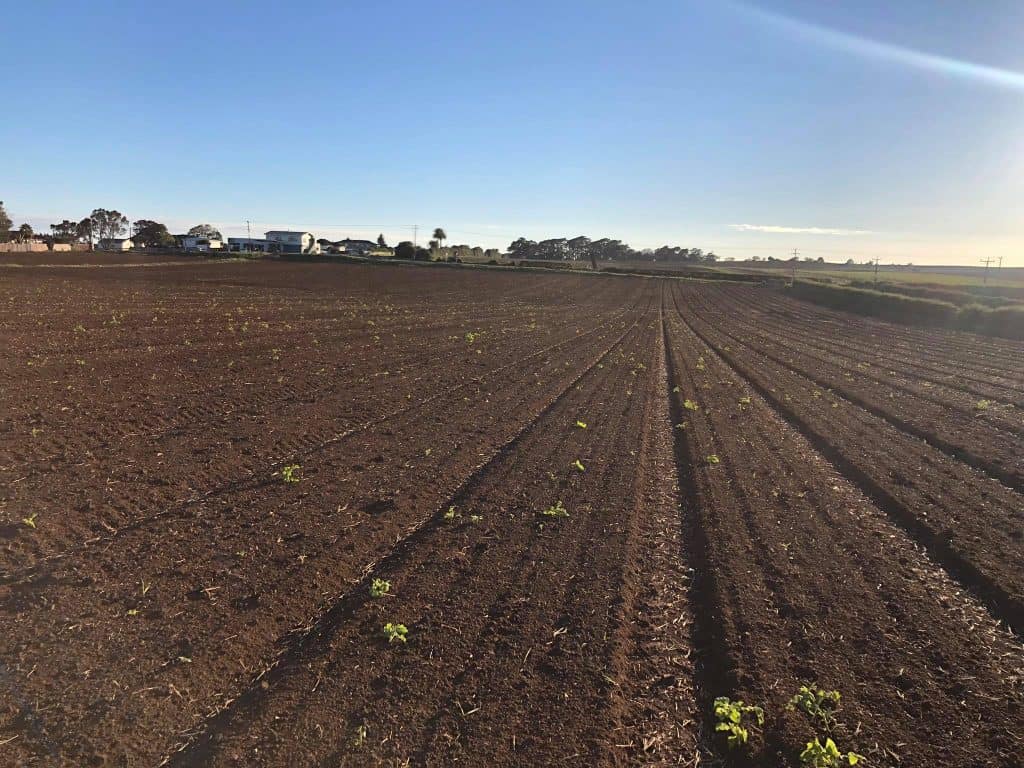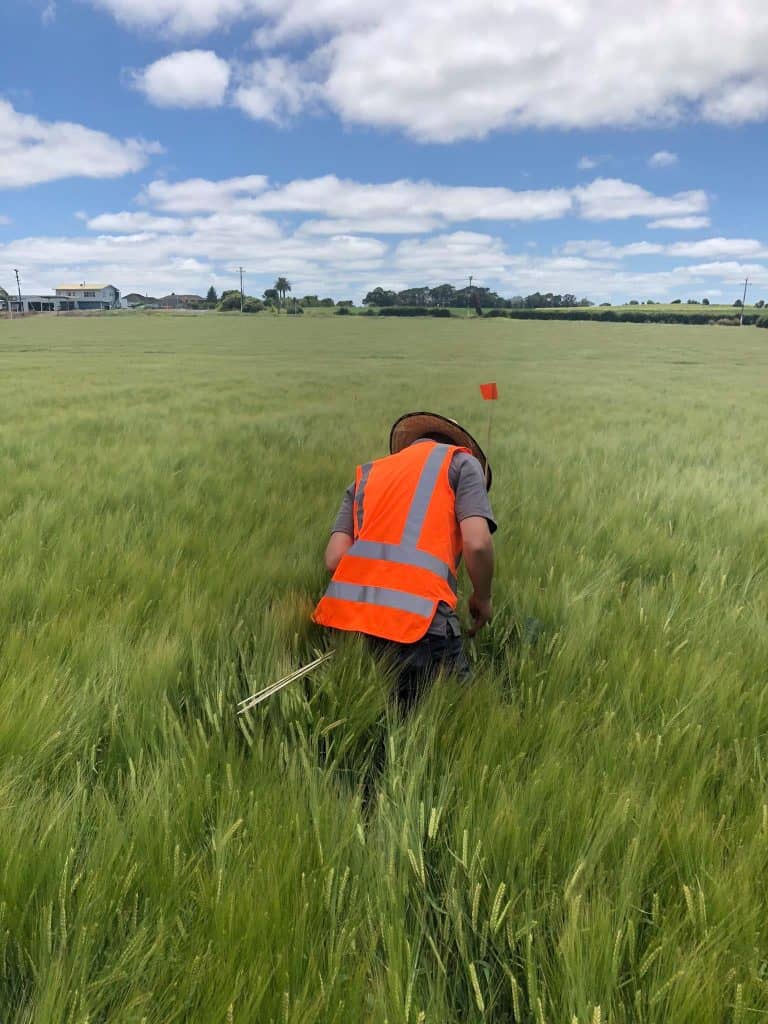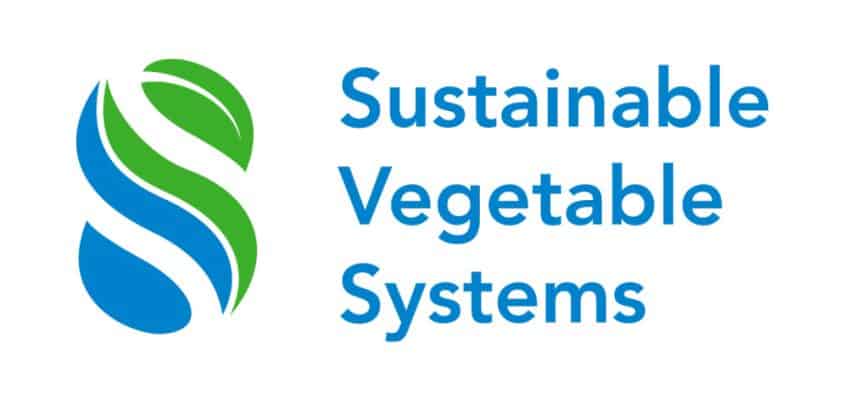Prepared by: Andrew Barber and Henry Stenning (Agrilink NZ), Trish Fraser and Bruce Searle (PFR).
We pulled this article together as we debated the significance of fallow periods on the risk to nitrogen leaching. Is a three-month fallow period riskier than two-months in fallow, and if so, how much riskier? Then the flip side of fallow is how much does the use of cover crops reduce the risk of nitrogen leaching, or increase it?
Much of the focus on nitrogen use efficiency and leaching mitigation is placed on fertiliser management practices. However, the contribution to soil mineral nitrogen from crop residue breakdown can be significant, and in some cases can have a far larger effect on nitrogen flows through the system than fertiliser applications.
The impact of crop residues on potential nitrate leaching and on the nitrogen supply for the following crop can be dependent on the length and timing of the fallow period, among many other factors.
While adjusting nitrogen fertiliser application rates and timing to match crop demand is critical to ensure nitrogen use efficiency, accounting for nitrogen recycled in the form of crop residue is just as critical in maximising productivity and minimising losses. Management decisions on the treatment of crop residues, the length and timing of fallow periods, and the use of cover crops will be dictated by multiple factors, including climate, soil nutrient status, and the types of crops grown within the rotation. Therefore, growers need to understand the underlying patterns of residue breakdown and how nitrogen cycles within the soil in order to make the most effective management decisions.
Growers need to be mindful of the stores of nitrogen present in crop residues and consider how best to utilise these. With the increasing cost of fertiliser, it is becoming increasingly worthwhile for growers to put cover crops in during longer fallow periods (i.e., greater than 3 months), to lock in that mineral nitrogen until it is time to plant the next cash crop. Cover crops also provide the additional benefits of increasing soil organic matter and providing some erosion control. For shorter fallow periods, or after incorporation of a cover crop, the fertiliser management plan for a new planting should not only take account the mineral nitrogen currently in the soil, but also the nitrogen still contained within the previous crop residues and the consider anticipated release rate of this nitrogen. This could initially even just be conservatively accounted for while knowledge grows around nitrogen release rates, with soil nitrogen testing used to validate those estimates during the growing season.
The Literature
A recently prepared report by Plant & Food Research and funded jointly by FAR, VR&I, and Potatoes NZ, A literature review of arable and vegetable crop residues, with emphasis on nitrogen status and factors affecting residue decomposition and nitrogen release, has established a good baseline of knowledge on this topic.
The exact dynamics of crop residue breakdown and mineralisation are complicated, with rates of nitrogen release dependent on multiple variables. Therefore, exact predictions of residue nitrogen release are difficult to make. However, certain factors can be accounted for to give a reasonable estimate of mineral nitrogen availability in the soil. The nitrogen budgeting tool, N-Sight, currently under development in the Sustainable Vegetable Systems (SVS) programme will incorporate a crop residue breakdown model. This will assist growers when planning fertiliser applications for the following crop.

The first of these factors is crop type. Generally, vegetable crops have a higher nitrogen concentration than cereals, grasses, or legumes. Some brassica crops can even contain in excess of 200 kgN/ha in the crop residue following harvest. It is important to note however, that residue nitrogen concentration is just one of the factors influencing availability of nitrogen in the soil. The total mass of the residue (both above and below ground) also has a significant impact and is dependent on the crop and the harvest index of that crop. Also throw into the mix the even greater impact of leaving behind a whole crop in the field due to market, be that grade standards or demand at the time of harvest.
Because of this dynamic between nitrogen concentration of crop mass left in the field, crops with a low nitrogen content, such as soybean and wheat, can actually contribute as much nitrogen in their residues – if not more – than some high nitrogen concentration vegetable crops.
Cover crops are often grown to improve soil structure, reduce erosion, mop-up excess nitrogen, and add to the soil organic matter. They can also provide a good source of nitrogen to the following crop if timed correctly. It is important to consider that the quantity of nitrogen returned to the soil is highly dependent on crop management. For instance – if a cereal crop was to be incorporated at the green stage, they would contain significantly more nitrogen than they would as post-harvest straw, not to mention the portion of nitrogen embodied in roots which is not usually measured.
It should be noted that the amount of nitrogen present does not always correlate to the amount of nitrogen available to the following crop. In fact, incorporation of crop residues that are low in nitrogen themselves can actually decrease the supply of mineral nitrogen through immobilisation. The soil microbes essentially borrow nitrogen from the soil to get sufficient energy to consume the residues that are low in N. Once they have consumed the residues they die off and the N they had been using is released.
One of the variables affecting the mineralisation-immobilisation equilibrium (whether or not nitrogen gets tied up or is available for plant uptake) is the carbon : nitrogen ratio. In general, cereal crops have the highest C:N ratio (i.e., have a low amount of N) and vegetable crops have the lowest (they contain a high amount of N). Low C:N ratios generally result in more mineralisation than those with high C:N ratios. Low lignin (the chemical component that makes plants rigid) and cellulose concentrations, and a low lignin:N ratio also assist with mineralisation.
Climate conditions also play a role in the rate of residue decomposition, since the rate of organic matter decomposition by microbes increases with higher temperatures (though this decreases when temperatures exceed ~35°C). Higher moisture also increases mineralisation rates, with soil at field capacity having the greatest rate of mineralisation.
Placement of residues can contribute to slower rates of decomposition when residues are left on the soil surface, though this is not always true for low C:N ratio crops (e.g., leafy vegetables). Treatment of crop residues, e.g., leaving on the surface, or cultivating in, is thus a potential tool for manipulating the timing of when crop residue nitrogen is released.

Crop residue addition to soil can result in three different processes occurring in the soil, these being mineralisation, immobilisation, or immobilisation followed by mineralisation (Figure 1.). The quality of the residue, primarily its C:N ratio, lignin, and cellulose contents will dictate which process will take place.
Cereal straw, with a high C:N ratio of 50-80, can have its residue N and any additional available soil N tied up by soil microorganisms as they decompose the large quantity of carbon. Therefore, there can be a net nitrogen immobilisation (temporary tie up) of up to 15 kgN/ha during the early stages of residue decomposition. This may not be obvious in a soil where there is plenty of N present but could become evident as yellowing in a crop that is grown under low soil N conditions. In contrast, grasses and vegetable crops decompose much faster as they contain more nitrogen and are therefore not nitrogen limited. While the C:N ratio is a good guide to the expected rate of decomposition, it will not always guarantee breakdown behaviour. For instance, despite their low C:N ratio legumes decompose slower than other vegetable crops due to their higher lignin content.
Source: Sharp JM, Khaembah EN, Fraser PM, Gee M., 2023. A literature review of arable and vegetable crop residues, with emphasis on nitrogen status and factors affecting residue decomposition and nitrogen release.
Findings from the Regional Monitoring Programme
The SVS regional monitoring programme has 9 sites across the country, from Pukekohe to Canterbury. Of the 40 crops sampled across these 9 sites over the past three years, 14 were analysed – based on having a fallow period following harvest of greater than 2 months duration. Of these 14 crops, 6 were vegetables, 5 were grasses, and 3 were cereals. While this is not enough data to draw firm conclusions from, it does help to demonstrate the general information described above.
Excluding outliers, the average mineral nitrogen level in the top 30cm at harvest was approximately 38 kgN/ha (range: 5 – 167 kg N/ha). The average maximum mineral nitrogen level within 3 months of harvest was 65 kgN/ha (range: 14 – 177 kg N/ha). During this period, the change in soil mineral N content for each crop was highly varied, ranging from -54 kg N/ha to +150 kg N/ha. It should be acknowledged however, that other factors working concurrently would also have influenced N gain (e.g., soil organic matter mineralisation) or loss (e.g., leaching) in the system.

Cereal crops (3) had the lowest average increase in nitrogen following harvest at just 1 kgN/ha. An outlier maize crop, not included in the analysis of the 3 cereal crops, had by far the largest decrease in soil mineral nitrogen following harvest at 54 kg N/ha, a combination of immobilisation and loss. This crop did have unusually high mineral nitrogen levels at harvest.
Vegetable crops had an average nitrogen increase of 22 kgN/ha, ranging between a decrease of 38 kgN/ha (cabbage) to a gain of 121 kgN/ha (cauliflower). Grasses had the largest average nitrogen increase, at 51 kgN/ha, ranging from a decrease of 5 kgN/ha to a gain of 150 kgN/ha.
While the monitoring of soil mineral nitrogen levels observes the changes, this is influenced by a range of factors, of which crop residue breakdown is just one. Nitrogen flowing through the system is concurrently being driven by other important variables such as leaching and soil organic matter mineralisation rates. High rainfall during the fallow period may have resulted in the loss of any mineralised nitrogen from residue and may show up in our monitoring as no change in soil mineral levels. While high temperature and moisture may have added additional nitrogen from the mineralisation of soil organic matter already present in the soil.
Considering these factors and the small sample size, the results of this short analysis are demonstrative rather than statistically significant and highlight the high level of variation in crop residue breakdown and resulting nitrogen availability. This small sample does however validate the literature discussed previously, with grass and vegetables providing a greater nitrogen supply to the soil than cereal crops on average.
The SVS programme will continue to work towards better understanding the factors affecting residue breakdown and mineralisation to ensure growers can have better confidence in making management decisions based on previous crop residues.
One of the significant benefits to come from the SVS nitrogen budgeting tool is that the different nitrogen pools are accounted for, even if conservatively to start with, and modelled from planting to harvest. Then measured soil nitrogen levels can be used to ground truth the budget as the season progresses. A nitrogen budget is just like a financial budget. They are both essential planning tools but having created a financial budget nobody then never looks at their bank account, and that is the same for a nitrogen budget, it needs to be checked by testing the soil mineral nitrogen level.
So, is a three-month fallow period more risky than two-months? Unfortunately, the answer is “it depends”. Therein lies the fun of growing vegetables.



